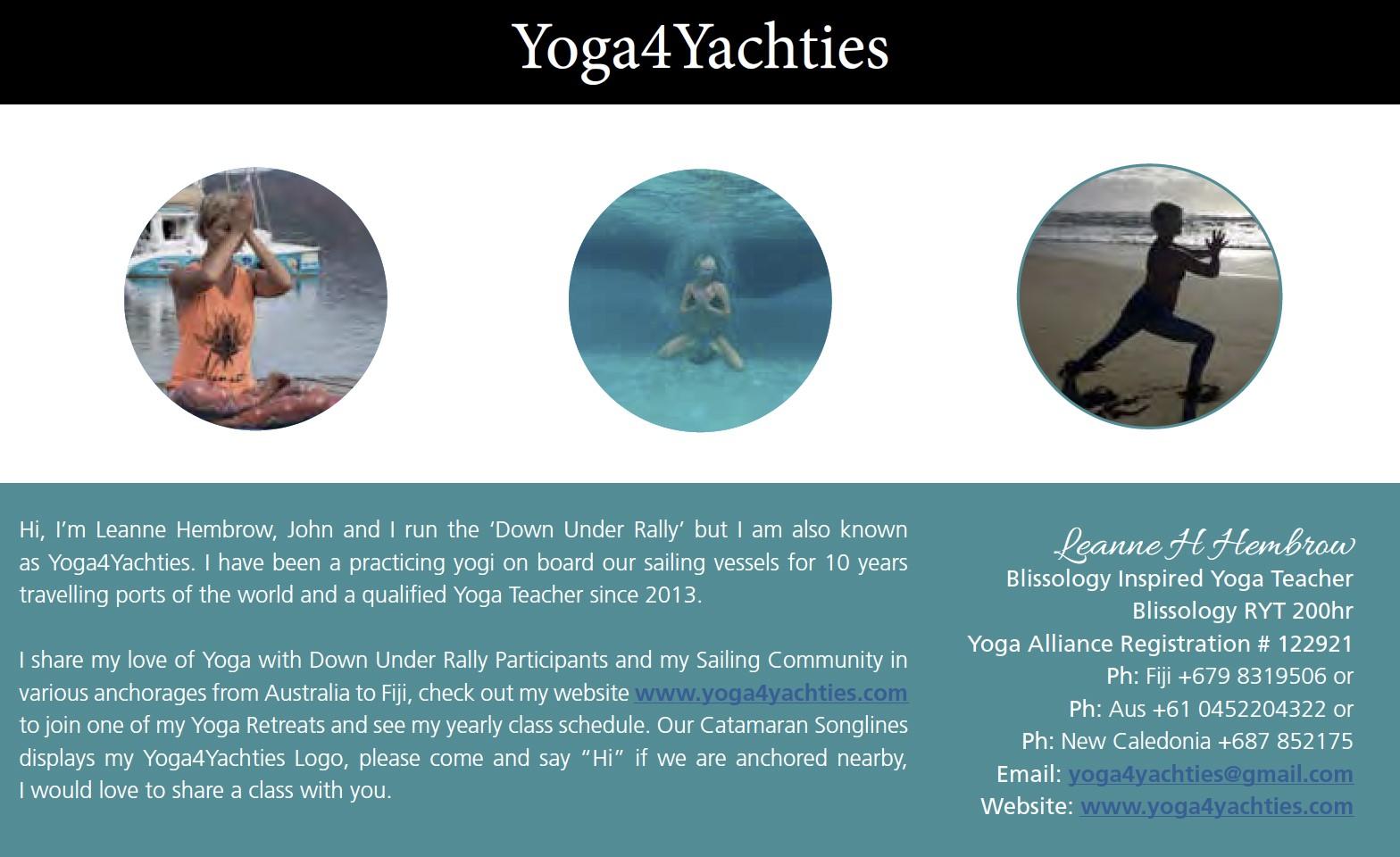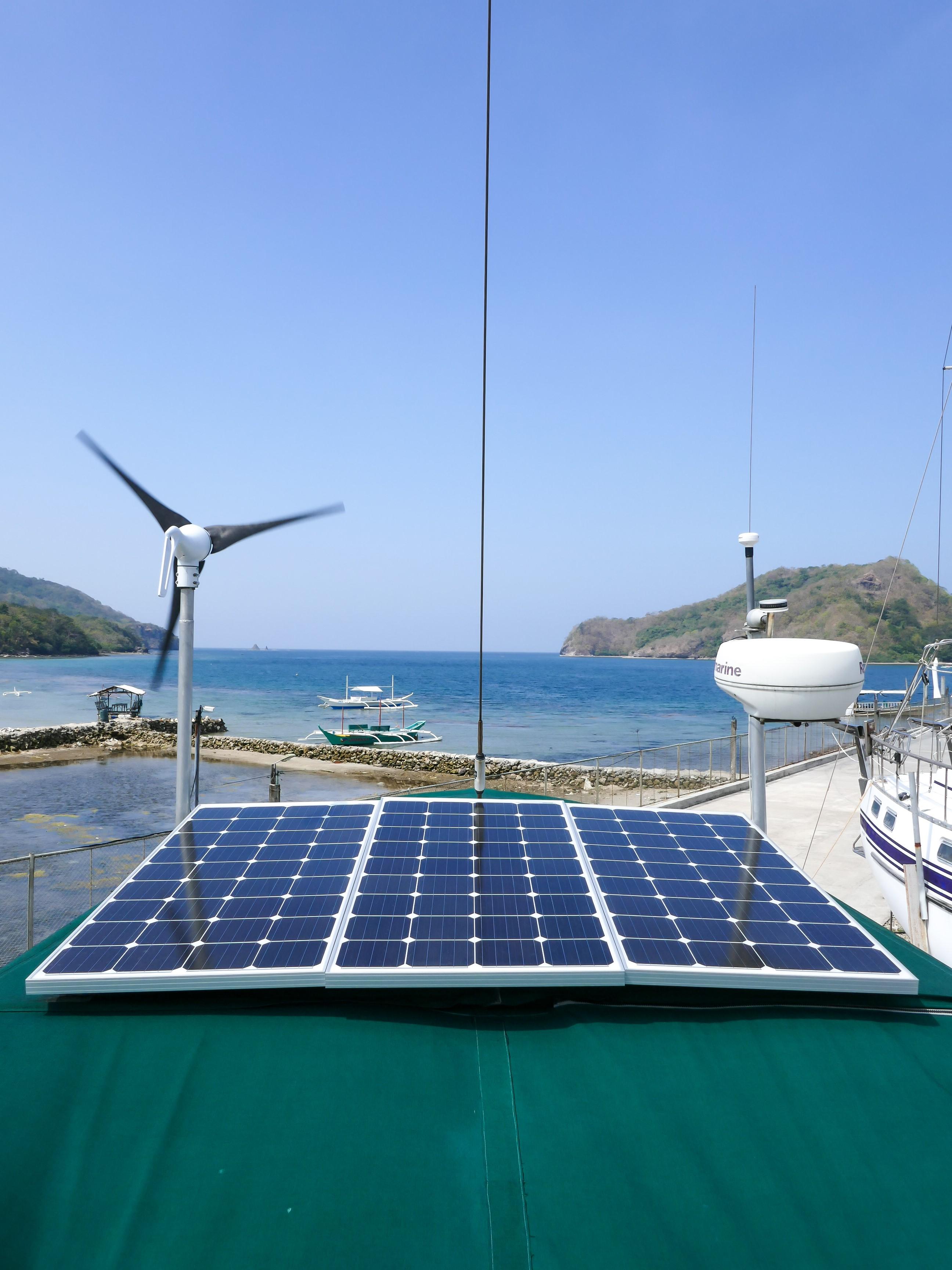
15 minute read
Sustainable Sailing: E waste
SUSTAINABLE SAILING Heather Francis

Advertisement

E-WASTE

In late 2018 we were getting ready to splash after an extended yard period when we ran into yet another problem. One minute after bootup the LCD screen on our chartplotter went black. We were still running the same Raymarine set up that was onboard when we bought Kate in 2008, but had recently invested in new chart cards to cover the Philippines and SE Asia, where we would be sailing for the next few years. Although we ran device-based navigation programs as a backup we prefer a dedicated chartplotter onboard as our primary data source. Was it time to repair or replace?
Steve began to research our options and quickly discovered that not only was our chartplotter model discontinued, the manufacturer no longer offered repair services. Excited by the prospect of a newfangled piece of equipment –vivid colours and a touchscreen! –we were disappointed to find that the latest models were not compatible with either our radar or our chart cards. Besides the hefty price tag of the upgrade, the cost now more tripled then we factored in replacing other components. It didn’t make any sense to be replacing the whole unit when it appeared only to be a problem with the LCD screen.
We decided to take a gamble and purchased a used chartplotter online, the same make and model as our malfunctioning unit. The seller could not verify if the chartplotter functioned correctly as a standalone as it had been used as a repeater display on the flybridge of a power boat, but the screen was crisp and bright. When it arrived we indeed had troubles with it communicating with our GPS but with nothing to lose, and steady hands, Steve was able to take out the delicate LCD screen and install it into our original unit. After all the drama and delays of the boatyard we were finally ready to sail.
It might seem that our choice to buy second hand parts to fix our chartplotter was
dictated by the cost constraints of upgrading our entire system. Of course, that was certainly a factor, but what tipped the scales for us was the waste that would be produced by replacing other, perfectly function components like the radar. This “e-waste”, as it is called, is a bigger problem than I realized.
WHAT IS E-WASTE?
E-waste, or electronic waste, is created when we discard any electric or electronic device. Although this category covers things like TVs, household appliances, and outdated office and medical equipment, it is largely made up of our discarded everyday digital tech: computers, laptops, tablets, and phones. And although this is the fastest growing waste sector on the planet, few people are aware of the far reaching, and sometimes deadly, effects that it is having.
It is estimated that approximately 50 million tonnes of e-waste is generated globally each year. As developments in technology accelerate, items become more affordable and replacement cycles get shorter, that figure is projected to reach 120 million tonnes per year by 2050. Startlingly, only about twenty percent of e-waste is properly recycled.
Outdated devices not only account for a large volume of waste, they also contribute to serious health problems and environmental pollution. Modern electronics are made up of small components, many of which are comprised of precious metals. While trying to recover those precious metals, or when items are thrown into landfills, harmful substances like mercury, lead, arsenic, and cadmium are released.
As with other waste sectors, much of the ewaste that is recycled is sent overseas to poor countries like Ghana. There the health and safety of the workers are largely ignored, despite exposure to heavy metals often being fatal. Add to that the high levels of toxic waste that are allowed to leech into the landscape and the downstream affects that has on the surrounding communities and upgrading your smartphone, laptop or chartplotter becomes a little more frightening than just the initial sticker shock.
E-waste also includes the waste produced in the storing and distribution digital data. With more information being stored “in the cloud” and on demand streaming platforms like Netflix and YouTube eclipsing traditional entertainment mediums, larger servers and data centers are being built. These facilities must be temperature controlled and powered around the clock. Factor in the energy used by the consumer to keep their digital devices powered up and the power required to keep the mobile grid functioning and you are looking at a sector that is projected to use twenty percent of the all electricity produced globally by 2030.
BELOW: Swapping the LCD screens in our chartplotter.

We can all agree that giving up our phone and other digital mod cons is not an option for most people. Even the hardcore, minimalist sailors still need to stay in touch. However, I still believe that we each have a responsibility to understand the impacts of our decisions and to take actions, even if they are small, to minimize our impact on the planet. Here are a few easy, everyday ways to help reduce ewaste.
TURN OFF/UNPLUG WHEN NOT IN USE: Perhaps the simplest action you can take just is to turn off digital devices when not in use. Instead of letting your device idle in “Sleep” mode for hours or days at a time, turn it off completely and save battery power. Turn off your mobile data when not actively online and unplug any chargers and cords that are not being used. Like turning off the light when you leave the room make switching off digital devices when not in use a habit too.
IS IT A NEED OR A WANT? There seems to be no end to gadgets or gizmos that the advertisers are telling us we can’t live without. Whether it is the next generation of an item you already have or a new toy to add to your collection, stop for a moment and ask yourself; Do I really NEED it, or do I just WANT? If it is item that you don’t really need, can you do without it? Maybe asking this question will prevent impulse purchases. Hopefully it will make you consider the larger impact you have as a consumer.
TAKE CARE OF WHAT YOU HAVE: Salt air and damp environments are hard on electronics. Leave devices safely stowed while underway to prevent accidental drops or splashes, invest in a waterproof box or a drybag so that you don’t have to worry about accidentally swamping your gear in the dinghy, and remember to rinse and dry any underwater equipment after use. Making an effort to protect your devices will mean you will have to replace them less often.
REPAIR, REPURPOSE, REUSE and RECYCLE: Like our old chartplotter, many electronic devices can be repaired or refurbished by the right people. Instead of buying something new check resources like eBay, Gumtree, Craigslist, and other online classified listing for pre-owned equipment. Many small devices like phones can be repurposed into dedicated MP3 players or an offline device for the kids. And when you have finally exhausted the use of your electronic device make sure that it is recycled properly, by a reputable and authorized electronic goods recycling depot.
SAVE AND STREAM CONSCIOUSLY: I love a good podcast and occasionally fall down the rabbit hole of mindless YouTube videos just like everyone else. However, I try to be conscious of how much I stream and what I save online. If you use cloud storage for things like photos, avoid automatic backup from handheld devices. Afterall do

BELOW: After a decade we've got some old devices to deal with.
you need to save 50 pictures of dolphins that you took on burst mode? When using streaming platforms like YouTube turn off the AUTOPLAY option to avoid mindless binge watching. Buy and download music once rather than stream the same album every time you want to listen to it.
DAILY DIGITAL DETOX: Committing to a daily digital detox will not only help reduce stress and regain mental focus but it can also reduce your digital dependency and your potential e-waste. Start by turning your phone off at night and wait one hour after your wake in the morning before turning it back on. Turn off push notifications, especially for social media, so that you are not constantly being reminded to pick up your device. Set daily usage limits for yourself when using social media platforms like Facebook and Instagram. If you are like me and work on your device, consider turning off your internet connection if not needed. Make social time in the cockpit or ashore devicefree time.
I wouldn’t have the opportunity to open this conversation about e-waste if not for my laptop, digital camera, smartphone with internet connection, and SisterShip, a digital magazine. Don’t worry, the irony hasn’t been lost on me. But I think that is important to remain curious, ask tough questions and be honest about how my habits, my decisions and my choices impact the world around me. And I hope you think so too.


Heather Francis is from Nova Scotia, Canada and has lived and worked on boats throughout the world. Since 2008 she has been living and sailing onboard Kate, a Newport 41 sloop, with her Aussie partner, Steve. She is a writer, photographer and cook who tries to live mindfully. Follow at www.yachtkate.com or @sustainablesailing41
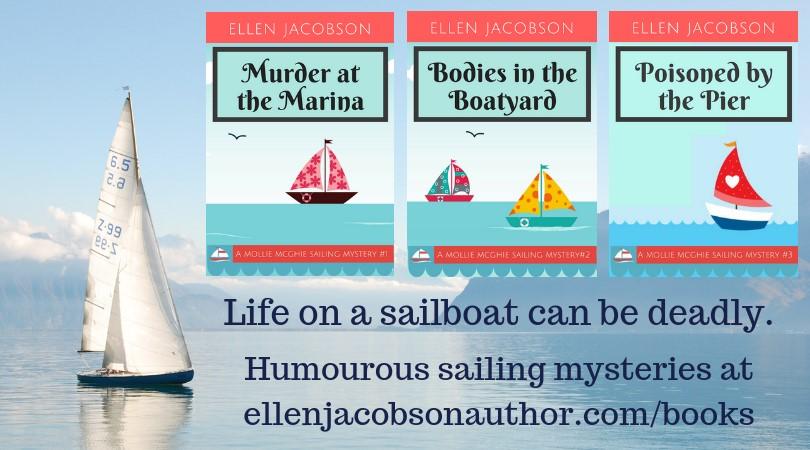


The biggest women’s sailing series in New South Wales (Australia) is the Tuesday night “Paspaley Twilight”, a regular evening for many women from the Sydney yachting community, including myself. I caught up with Karyn Gojnich, the Royal Sydney Yacht Squadron’s Club captain about ‘The Season That Was’, sailing before COVID-19, to reflect on the achievements and participation in their women’s racing program ‘Ladies of the Sea’.
We discussed the three key elements to the RSYS LOTS program including Tuesday Twilights, Women’s Learn to Sail and the Coaching Regatta.
TUESDAY TWILIGHT RACING sponsored by PASPALEY
The Royal Sydney Yacht Squadron have been running the Tuesday night twilight sailing for 16 years. It’s a 12-race program with six races before Christmas and six races after, for women helm. The serious racing kicks off the Tuesday after Melbourne Cup (Australia’s best-known horse race) and again in February until the end of March. A few years ago, after
RSYS - LOTS Regatta 2019.

feedback from the sailors, they introduced two pre-season warm up races in October and two also in January. There is a networking evening in September to introduce skippers and crew, which is also another wonderful opportunity to also meet up with other women who enjoy the sport of sailing.
What’s rewarding for Karyn and the team is that they are seeing growth in participation year on year. The number of boats on the water and frequency of crews coming together both to race and to socialize is increasing every season. Approximately 43 yachts registered to race in 2019, and 95% of the boats consistently racing every week. With a club trophy and Paspaley earrings up for grabs this series is competitively contested.
WOMEN’S LEARN TO SAIL
In addition to this Ladies of the Seas twilight series, the club also offers Adult Learn to Sail courses specifically for women on a Wednesday. The program focuses on developing your skills and confidence, and it’s conducted by an accredited Australian Sailing Instructor using the club’s Elliott 7 keelboats. It follows the Australian Sailing three step ‘Keelboat Program’ including Start Crewing, Start Helming, Start Skippering,
Spinnakers, and Start Racing. It provides a sound introduction for those who are interested in the sport. Don’t worry if you work full time, mixed courses are also offered on Sundays. If you are close to Sydney Harbour it’s offered to club members and non-members.
BELOW TOP: LOTS Regatta Dinner. Lisa Darmanin, Katie Pellew-Spithill, Lucinda Whitty, Karyn Gojnich. BELOW BOTTOM: LOTS. Along-side coaching.
Back in 2019, the club introduced the LOTS (Ladies of the Sea) Coaching and Sailing regatta, on the October long weekend.
It follows on from Karyn’s experience coaching at a similar style event down in Western Port Yacht Club on the Mornington Peninsula, Victoria. Over the five years it was run the event bought together some of the finest women coaches from around Australia


including Tessa Parkinson (WA), Krystal Weir (VIC), and Karyn Gojnich (NSW). It was a dinghy coaching regatta ‘for women, run by women’ and an opportunity to showcase the talents of our great female sailors, who, in some circumstances, don’t receive the recognition and seem to be overlooked when it came to the larger keelboats.
The weekend saw women from all around
BELOW TOP: LOTS coaching. BELOW BOTTOM: LOTS boats.
Australia attend and it wasn’t just about the sailing, it was a great opportunity for the club to come together; the camaraderie an ideal environment for those who wouldn’t normally have access to this type of high grade coaching. This was a regular event for Karyn for a few years and she saw potential in bringing a similar event to Sydney Harbour.
With an idea that there was space in the sailing calendar the regatta was scheduled for the October long weekend. Karyn and the team set about planning and tackling the

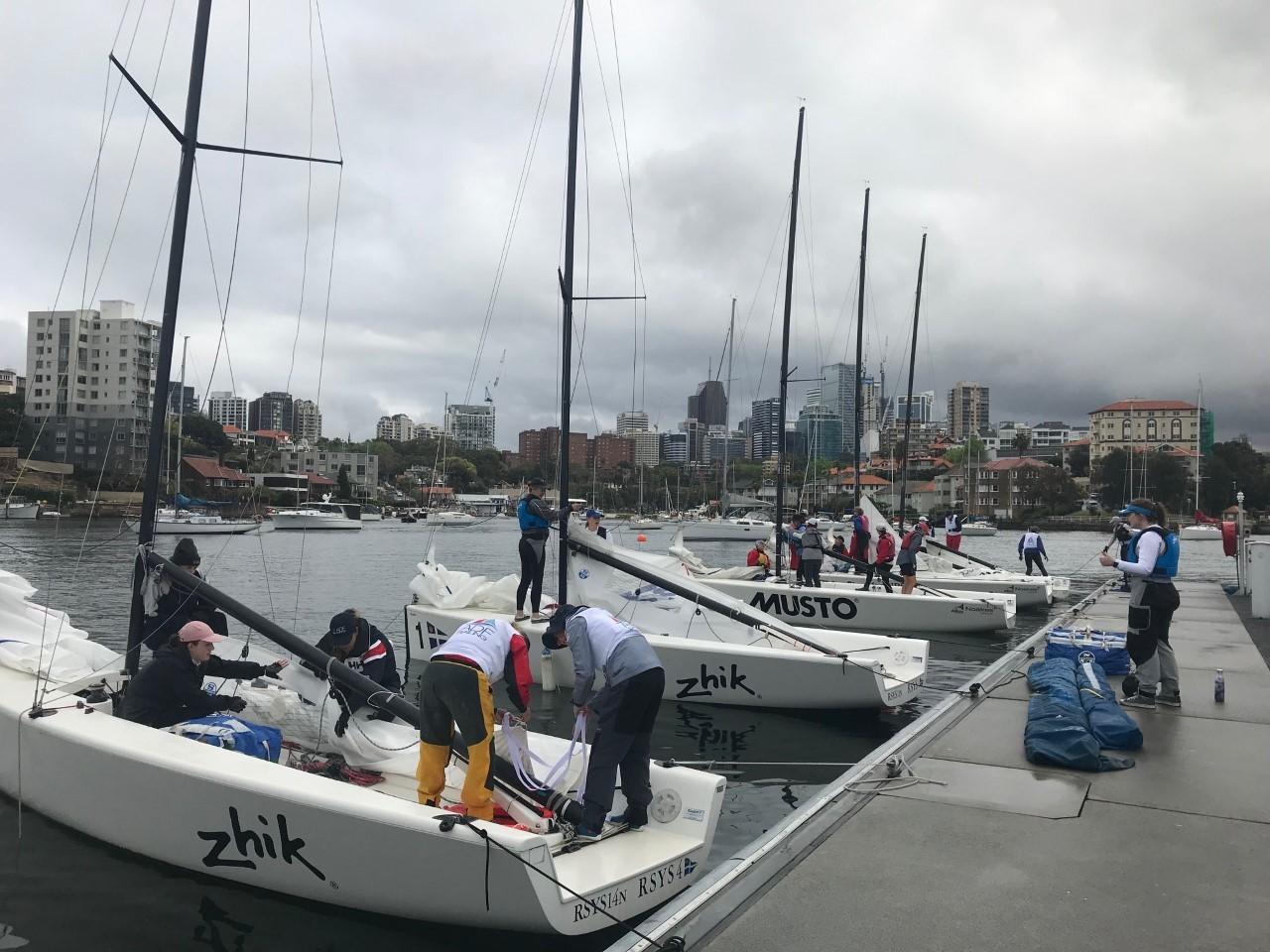
logistics of such an event. It would have two divisions, including keelboats and one design, utilising the squadron’s and the CYCA Elliott 7s.
The one design coaching, on water drills and racing was led by Karyn and Linda Bell (Balmain SC), Courtney Smith (Newcastle CYC), and RSYS members Michael Nash and Eddie Moult. Karyn found the key to success is placement of an experience sailor/ instructor on the boat, as they do with the Paspaley Tuesday twilights, with those who need to build confidence and be empowered to take that next step, realising that they can do it.
For the keelboat division, Australian Sailing’s chief instructor Nickie Jones came across from WA, and was accompanied by Vanessa Dudley and Lindy Hardcastle, to provide tactical tips for the keelboat maneuvers in the classroom. Those exercises were then put to the test out on Sydney Harbour.
Nickie, Vanessa, and Lindy set about refining skipper and crew skills focusing on a variety of technical tips to grow skippers’ confidence and focused on crew techniques to streamline their performance during a variety of racing maneuvers, whilst Karyn utilised the RIB to
BELOW: LOTS dinner speakers.
Karyn mentioned technique and some of the little things, for example, “Reminding everyone once you’ve got everything on, get the weight up on the rail”, that can make all the difference. Unless people have sailed at a higher competitive level, it may be something they wouldn’t think of doing instinctively.
The two-day event saw participation from multiple clubs: Middle Harbour, Manly, and the Cruising Yacht Club of Australia. Crews were made up of people with different levels of experience such as those who sailed regularly in the Paspaley Tuesday Twilight, The Royal Australian Navy, and included those who are new to the sport.
The weekend finished on the Sunday evening with presentations to the divisional winners and place getters and a special event dinner “Inspirational Women in Sailing” with guest speakers Lisa Darmanin, Lucinda Wittey, and Katie Pellew-Spithill.
An all round wonderful event for 2019, this a regatta you should schedule for this coming October long weekend in 2020.
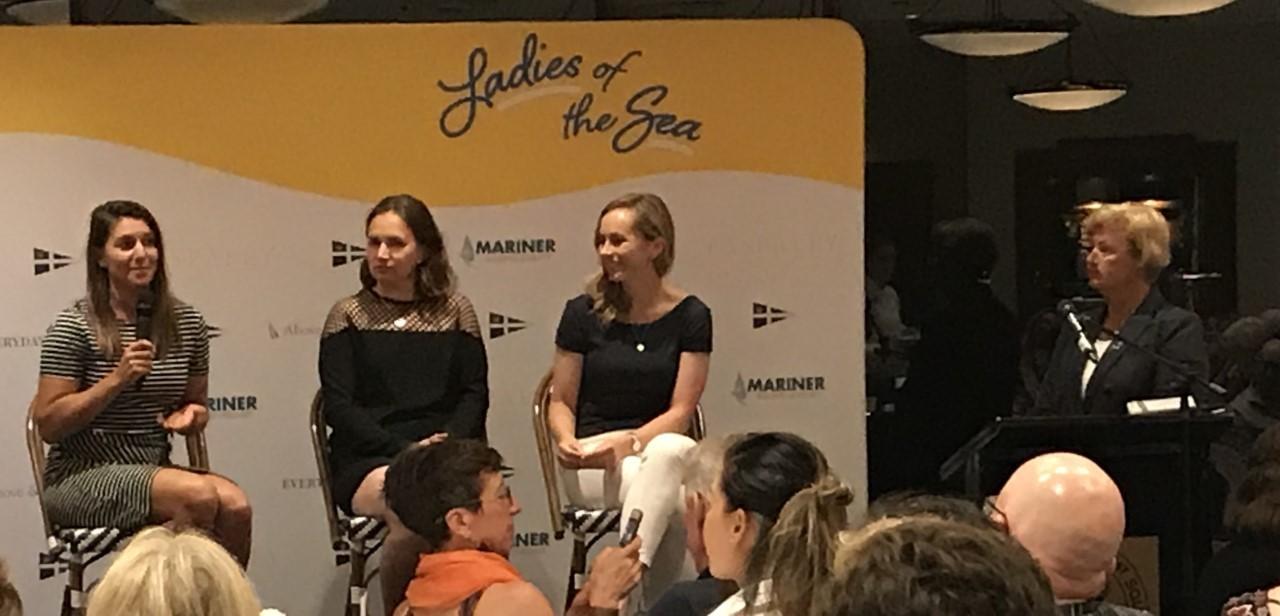
Whilst in lockdown, I’ve been putting together a series of Podcasts talking to “Women in Sailing” about their life and love of sailing. This will be an ongoing series which I hope will inspire fellow sailors and connect them with some of the yacht racing women here in Australia and around the world. You can catch up on this series by visiting https://anchor.fm/womeninsailing or register via the podcast website www.womeninsailing.com.au
WHAT’S NEXT FOR 2020
The end of May saw COVID-19 restrictions start to be lifted and sailing resume at our clubs around Australia. Many clubs have already posted some women’s events. Below are some events and their dates already announced.
DEBORAH WALLACE is the founder of Sailing Women's Network Australia, a private group of like-minded women who enjoy and participate in inshore and offshore yacht racing Australia and worldwide. The group was formed with the idea to encourage networking and promote participation at all sailing events around Australia and overseas. Open to those who actively participate in weekly racing, volunteering, and key industry professionals, our group supports all levels of sailing skills and work with those who have a vision of participating in yacht racing. In the coming year we will be growing our group and developing partnerships that should benefit our members, more opportunities to connect with other sailors from around Australia and possibly overseas. We welcome women with a passion for yacht racing at all levels.
* Dates were correct at time of writing but may be subject to change given COVID-19 restrictions.
DATES Sunday 23 August 2020 Saturday 26 & Sunday 27 September 2020 Friday Night 2, Saturday 3 & Sunday 4 October 2020 Saturday 24 October 2020 Sunday 25 October 2020 Women’s Series Women’s Laser Regatta Ladies of the Sea Coaching Regatta
MYC Helly Hansen Women’s Challenge MYC Helly Hansen Women’s Challenge CLUB Cruising Yacht Club of Australia Double Bay Sailing Club Royal Sydney Yacht Squadron
Manly Yacht Club Manly Yacht Club
